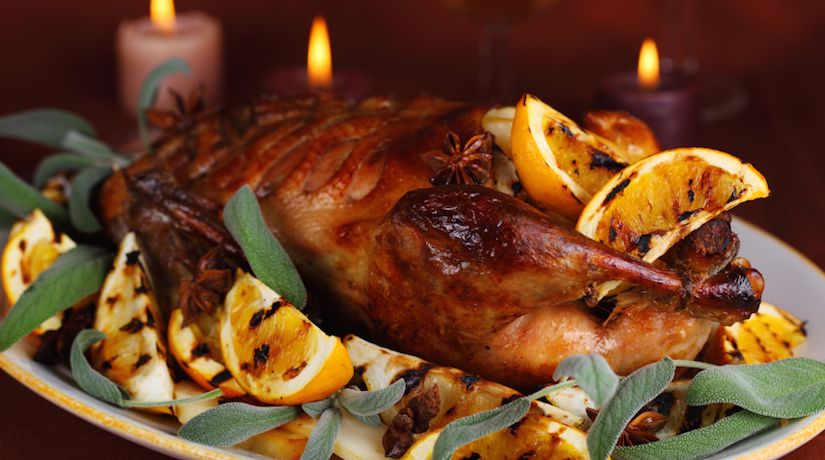The Bible lists animals that are fit or unfit for human consumption. But only birds unfit to eat are included in the list. So which birds are edible?

Does God consider duck a food we can eat? It is considered a clean bird by the Jews, but some people have questioned this.
For example, some note that both Leviticus 11:18 and Deuteronomy 14:16 in the King James Version list the swan as unclean—a bird that “shall not be eaten” (Leviticus 11:13). Some argue that the duck is part of the swan family; therefore, if the swan is unfit for human consumption, then so is the duck. This reasoning applies the principle of “according to its kind,” and places the duck according to the swan kind. (The phrase “according to its kind” is taken from the creation record in Genesis.) According to this argument, one would conclude that duck is unclean and should not be eaten.
But is this correct? Most authorities concur that “swan” is an incorrect translation in the original King James Version of the Bible. Most modern English translations of Leviticus and Deuteronomy do not have the word “swan,” but rather, “white owl” or “little owl” as in the two following examples:
- Leviticus 11:18: “The white owl, the desert owl, the osprey” (New International Version); “the white owl, the jackdaw, and the carrion vulture” (New King James Version).
- Deuteronomy 14:16: “The little owl, the great owl, the white owl” (NIV); “the little owl, the screech owl, the white owl” (NKJV).
Consider the Hebrew text of Leviticus 11:18
- The Hebrew word tanshemeth (Strong’s Exhaustive Concordance #8580) is used to designate an unclean creature (unfit for human consumption). Tanshemeth is used twice in Leviticus and once in Deuteronomy.
- The Biblia Hebraica Stuttgartensia suggests “swan” is a mistranslation.
- Leeser’s Old Testament English Translation of the Hebrew Bible states, “It is inaccurate to translate the Hebrew word tanshemeth, as swan.”
Additionally, the Tanakh: A New Translation of the Holy Scriptures According to the Traditional Hebrew Text has the “white owl” or “little owl,” not “swan.” There is no mention of swans, geese or ducks as being unclean.
Moreover, speaking of the swan, the International Standard Bible Encyclopedia states, “White and gray swans … are among the most ancient birds of history; always have been used for food; … so there is no possibility that they were ever rightfully placed among the birds unsuitable for food” (“Swan”).
Below are two more reasons some people argue that ducks or geese are unclean (unsuitable for food).
- They are web-footed birds. However, nothing in Scripture supports this argument. The term “web-footed” is not in the Bible.
- Others argue that ducks and geese are scavengers and that they are therefore unsuitable for food. However, the habits of these birds prove otherwise. They are not scavengers, and the Bible does not state they are scavengers.
What an animal eats does not make it “clean” or “unclean”
There are some who believe what an animal eats makes it clean or unclean. While it is true that birds of prey are all unclean, an animal’s diet doesn’t provide a complete definition of whether it is clean or unclean. From studying the lists in Leviticus 11 and Deuteronomy 14 we can conclude that it’s how God made an animal, fish or bird that makes it clean or unclean (unfit for human consumption).
As an example, a horse eats mainly grass, hay, oats, barley, flax, etc., and yet horse meat is unclean, not fit for human consumption. It is not what an animal eats, but the way its flesh was designed from creation that makes the difference. Moreover, you could feed a confined pig a healthy mixture of only grain, but doing so would not change the flesh of the pig—neither horses nor pigs were created for human consumption, according to the Creator.
Dr. Josh Axe discusses the digestive system of the pig in his article “Why You Should Avoid Pork”: “There are reasons that the meat of the pig becomes more saturated with toxins than many of its counterpart farm animals.”
In addition to the way the animal was designed by God, horse meat often contains a chemical poisonous to humans, according to Melanie Jones in this International Business Times article: “Horse Slaughter Approved in U.S.: 5 Reasons Not to Eat Horse Meat.”
The biblical list is not intended to be an exhaustive source; it gives us guidelines by which we can make good judgments. We must look to additional sources for information about the habits and characteristics of clean and unclean birds in order to determine which ones are suitable for food.
In both Leviticus 11 and Deuteronomy 14, fewer than two dozen fowl are listed as examples of birds that one should not eat. According to some sources, there are approximately 8,616 species of birds in the world!
Obviously, the biblical list is not intended to be an exhaustive source; it gives us guidelines by which we can make good judgments. We must look to additional sources for information about the habits and characteristics of clean and unclean birds in order to determine which ones are suitable for food.
The Talmud
In the Talmud (a combination of the first five books of Bible and oral traditions of rabbis, passed down through the ages before being written down) the number of unclean birds is 24. The Bible lists 20 and the oral traditions add four additional ones. The Talmud then states, “The clean birds are without number” (Hul. 63b).
The six characteristics of the clean birds given in this resource are:
- They are not birds of prey.
- They have a supernumerary toe (ezba yeterah), which is interpreted to mean either an additional toe behind the others, or an elongation of the middle toe.
- They are supplied with a crop.
- Their stomachs have two skins that can be easily separated.
- They catch food thrown to them in the air, but bring it to the ground, where they divide it with their bills before eating it, while the unclean birds devour it in the air, or press it with one foot to the ground and tear it with their bills.
- They must spread their toes so that three front toes are on one side of a perch and the hind one on the other side of the perch.
(Articles in the Jewish Encyclopedia under “poultry” and “clean and unclean animals” provide additional helpful information.)
An interesting point to consider is the fact that the dove and the pigeon were anciently used for sacrifice (Luke 2:24; Leviticus 1:14-17). Thus, the characteristics of these two birds are helpful in determining which fowl are clean or unclean. Both of these birds fit the six descriptions given above for birds that are suitable for food.
Additional information
Clean birds have, in essence, three stomachs: a crop, a gizzard and another section between the two. This prevents poisons from being assimilated into their meat similar to the way the digestive process works in ruminant animals (which have a series of four stomachs).
One argument suggests a duck does not have a crop (an expandable muscular pouch near the gullet or throat used to store food for later digestion) and therefore concludes that the bird is unfit for human consumption. However, anatomically, ducks do have a crop. The crop on a duck, unlike that on a chicken or a turkey, is little more than a widening of the esophagus; but it is a crop, nonetheless.
“Leaf-eating birds such as swans, geese, grouse, ducks and other game birds, have bacteria in their intestines which break down cellulose. Pigeons and doves use their crop to store, or partly digest, food taken too quickly for the stomach to handle. During the brooding the crop produces ‘milk’ from seeds eaten, which is regurgitated for the young. This is one form of rumination, making these clean birds similar to clean animals, which chew their cud” (Robert Burton, Bird Behavior, 1985, p. 76).
In conclusion
Based on the information presented in this article and since the Bible does not mention specifically that ducks are unclean, we believe the duck, as well as the swan, to be a clean bird.
For more about what the Bible teaches about meats that should or should not be eaten, see the section on “Clean and Unclean Animals: Does God Care What Meats We Eat?” and the chart “Clean and Unclean Meats.”





